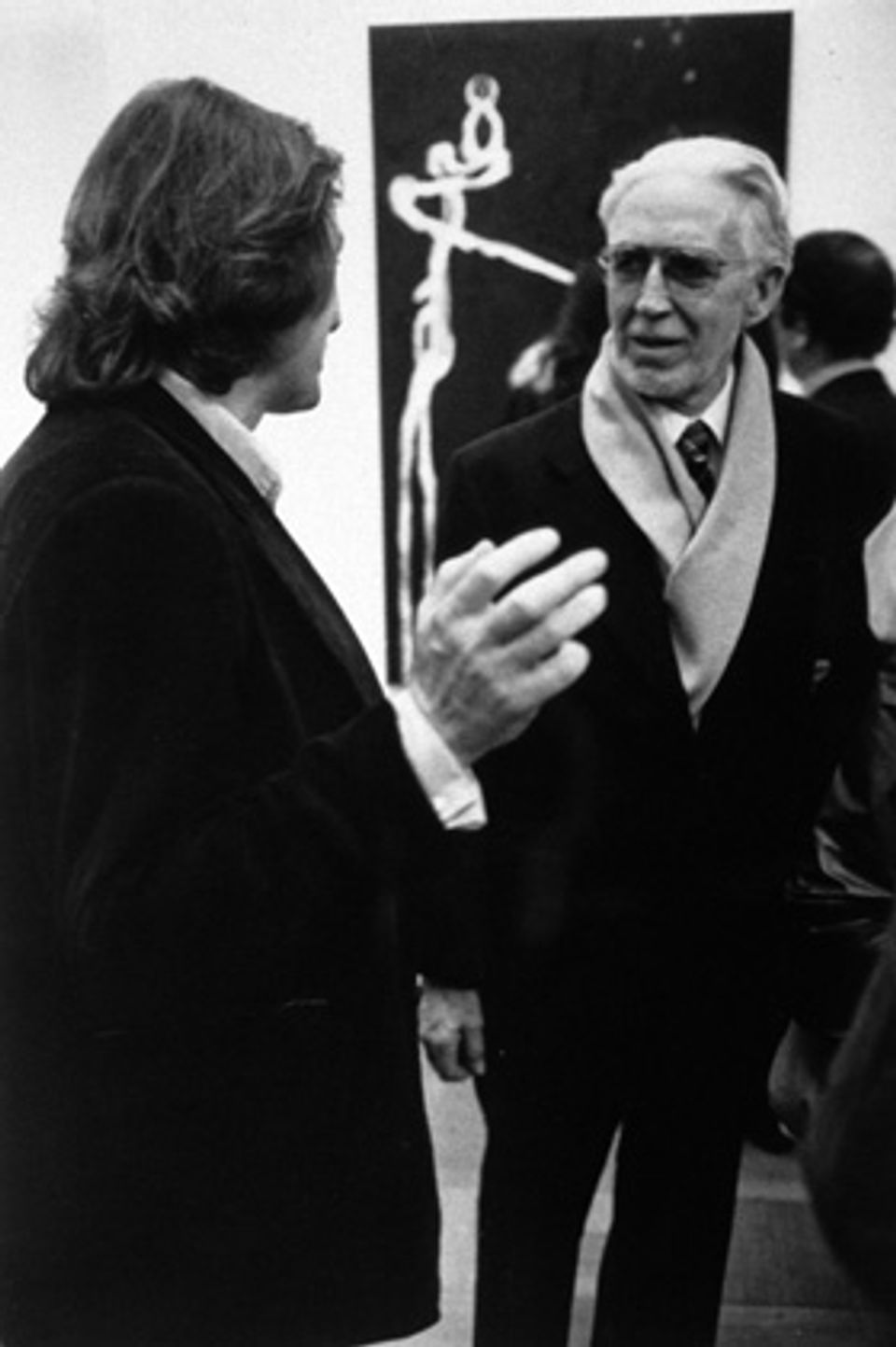Clyfford Still

- Also known as
- Clyfford E. Still
- Born
- Grandin, North Dakota, United States
- Died
- Baltimore, Maryland, United States
- Active in
- Westminster, Maryland, United States
- New York, New York, United States
- Biography
Clyfford Still's rugged and distinctive paintings seem to come from a manner of living and an approach to painting that are hardly characteristic of the suavity of even some of the best painting of recent decades. This is partly understandable when viewed against his background and upbringing. Still was born in 1904 in Grandin, North Dakota, and seems to have carried with him throughout his life some of the vast scale of the Great Plains. His uncompromising view of the world attracted attention, and his personality could precipitate in his like-minded (if initially less daring) colleagues great advances in their art.
At Washington University, and then at the California School of Fine Arts in the 1940s, Still's teaching was memorable, resulting in "schools" that exist to this day. In New York City he became part of the circle of Abstract Expressionists, and even in that earnest group of painters was considered among the most important. He was one of the few artists who maintained a lifelong correspondence with Jackson Pollock, based on mutual respect and criticism of each other's work.
National Museum of American Art (CD-ROM) (New York and Washington D.C.: MacMillan Digital in cooperation with the National Museum of American Art, 1996)
- Luce Artist Biography
Clyfford Still’s childhood was split between Spokane, Washington, and Alberta, Canada, where his family had a farm. He visited the Metropolitan Museum in New York in the 1920s to see the paintings he had “learned to love through . . . reproductions” (Demetrion, Clyfford Still, 2001). After studying at the Art Students League, he taught for several years at Washington State College (now University) and traveled to Saratoga, New York, in the summers to work in an artists’ colony. Still was involved in the beginnings of abstract expressionism and the New York School, but refused to be identified with either, saying that he was “utterly committed to freedom” and wanted to paint only for himself. In 1961 he bought a farm in Westminster, Maryland, and spent the rest of his life in relative isolation. (Zilczer, Clyfford Still, Exhibition Catalogue, 2001)













